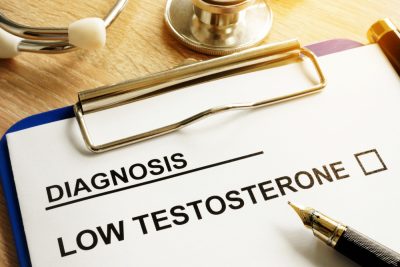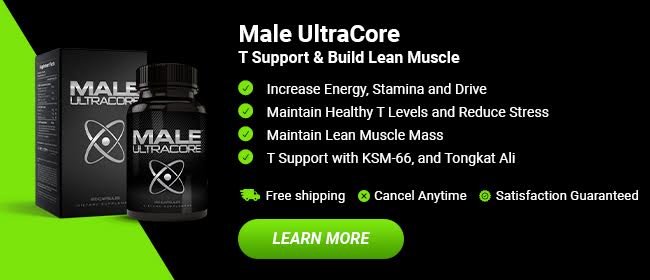Free testosterone is the testosterone that is presently in your bloodstream.
If you’re undergoing tests to determine whether you have low testosterone, your doctor might suggest you to test for both your total testosterone and your free testosterone.
While both are important, this article will delve into free testosterone—and why it’s a critical facet of men’s health.
Free testosterone is basically the percentage of your total testosterone that isn’t bound to any protein, leaving it “free” to circulate through the bloodstream. Free testosterone levels, like total testosterone levels, are subject to decrease as men age, or they might be deficient due to medical conditions.
The lowdown of free testosterone
Most men are already familiar with testosterone as the so-called “male sex hormone” (even if it is present in both men and women.)
However, there are two types of testosterone: one that binds to albumin and sex hormone-binding globulin (SHBG), otherwise known as bound testosterone, which comprises majority of total testosterone levels, and the testosterone that is unattached and therefore biologically available to the body, which known as free testosterone.
On the other hand, total testosterone measures for both bound and free testosterone.
Why is free testosterone important?
Testosterone plays a critical role in a variety of bodily processes and functions, such as the following: libido, facial and body hair growth, sperm production and fertility, obtaining and keeping erections, regulating emotional states, promoting healthy muscle mass buildup and improved bone density, as well as being involved in the production of red blood cells — just to name a few.
Where does testosterone come from?
The process of testosterone production is, like with most hormones, a fairly complex one. In general, the hypothalamus, releases gonadotropin-releasing hormone (GnRH), which then sends a message to the pituitary gland to emit luteinizing hormone (LH) into the bloodstream. Once LH circulates to the body and into the testicles, it activates Leydig cells, which are responsible for testosterone production in men. Women, on the other hand, produce testosterone from their ovaries.
Once testosterone levels in the bloodstream rise, messages are then sent to the pituitary gland and hypothalamus to cease the entire testosterone production process.
It’s a rather delicate, complicated process, but the process is how the body regulates hormone levels and keeps them in order.
Why should you test for testosterone levels?
We already know that aging is linked to diminishing testosterone levels over time. Total testosterone levels start a slow but gradual decline at around age 30, which decline even further as men age.
However, it must be said that low testosterone isn’t automatically a problem. In some cases, individuals develop symptoms arising from hormonal levels, particularly those that indicate low testosterone levels, or hypogonadism. It is estimated that as much as 12% of adult males suffer from acute low testosterone levels. Meanwhile, 50% of men over 80 may be clinically deficient in testosterone.
If you suspect you might have a testosterone deficiency, consult your doctor to see if you require a testosterone check. If you do, make sure to test for both your total and free testosterone levels.
It must be noted that free testosterone levels may decline more rapidly than total testosterone does. Men may have adequate testosterone levels but low free testosterone, therefore it is imperative to get tested for both in order to paint a fuller picture of what’s going on with your hormones.
What causes low testosterone?
 Testosterone levels are at their peak during the morning and constantly change throughout the day. Your doctor may want to test your testosterone levels several times during the morning in order to determine whether you have a testosterone deficiency.
Testosterone levels are at their peak during the morning and constantly change throughout the day. Your doctor may want to test your testosterone levels several times during the morning in order to determine whether you have a testosterone deficiency.
Other medical conditions that may cause testosterone deficiencies include obesity, metabolic syndromes, diabetes, testicular trauma or damage, chemotherapy, autoimmune diseases, endocrinal disorders, or side effects arising from medications such as antidepressants or narcotics.
In such cases, treating the underlying medical conditions that lead to testosterone deficiency may lead to its restoration and normalization.
What happens when your free testosterone levels are low?
Just because your total testosterone is normal doesn’t mean you’re in the clear. Low free testosterone levels can lead to symptoms like a reduced libido, erectile dysfunction, an inability/difficulty to build lean muscle mass, reduced body and facial hair, a feeling of fatigue, changes in mood, osteoporosis, and anemia, among others. Consult your doctor if you suspect that you have any of the aforementioned symptoms.
Can you have too much testosterone?
Testosterone needs to be in equilibrium with the rest of your body’s hormones. Too little or too much isn’t good for both men and women alike.
Excessive testosterone usually happens in men who use anabolic steroids, particularly the ones athletes have tested for. Symptoms of excessive testosterone in men include increased likelihood of contracting prostate cancer, acne, gynecomastia (the development of breast tissue in men), apnea, hypertension, high cholesterol levels in the blood, testicular shrinkage, blood clotting problems, increased red blood cell count, or adrenal gland or testicular tumors.
On the other hand, polycystic ovary syndrome is the most frequent cause of elevated testosterone levels in women. Polycystic ovary syndrome is caused by a hormonal imbalance, specifically the ratio of female hormones to male hormones. This leads to symptoms such as abnormal hair growth, infertility, irregular menstruation patterns, weight gain, among others.
What should you do if you suspect you have low levels of free testosterone?
 Free testosterone levels fluctuate throughout aging. Older men will definitely record lower testosterone levels than they did in their peak years. However, it’s not merely a matter of numbers. It’s the reason behind them, and if the number is an indication of any particular problems under the hood. Your doctor will be best able to help you get to the bottom of the situation by putting you through a physical test as well as taking some measurements of your vitals to check whether you do have low testosterone and whether testosterone replacement therapy is a potential avenue for you to take.
Free testosterone levels fluctuate throughout aging. Older men will definitely record lower testosterone levels than they did in their peak years. However, it’s not merely a matter of numbers. It’s the reason behind them, and if the number is an indication of any particular problems under the hood. Your doctor will be best able to help you get to the bottom of the situation by putting you through a physical test as well as taking some measurements of your vitals to check whether you do have low testosterone and whether testosterone replacement therapy is a potential avenue for you to take.








COMMENTS